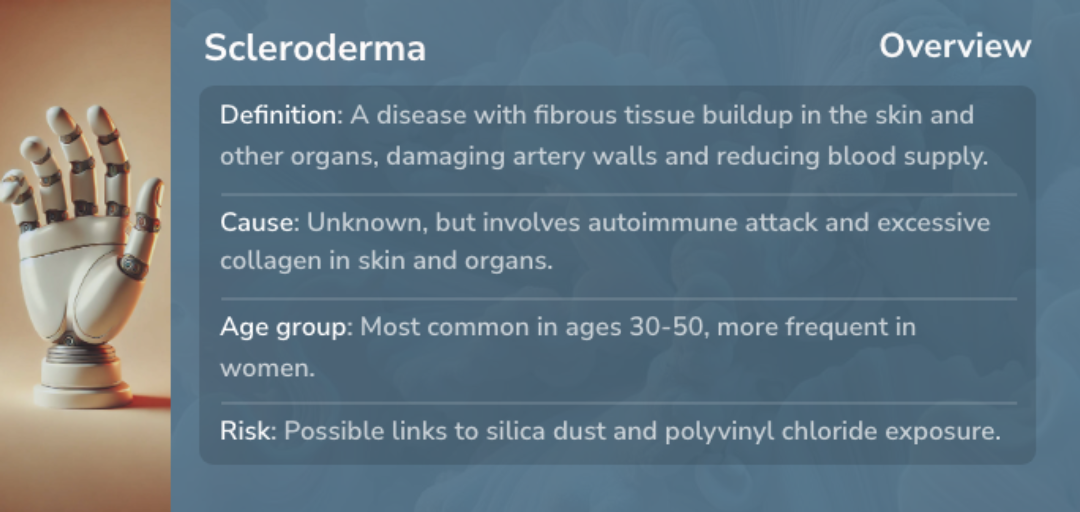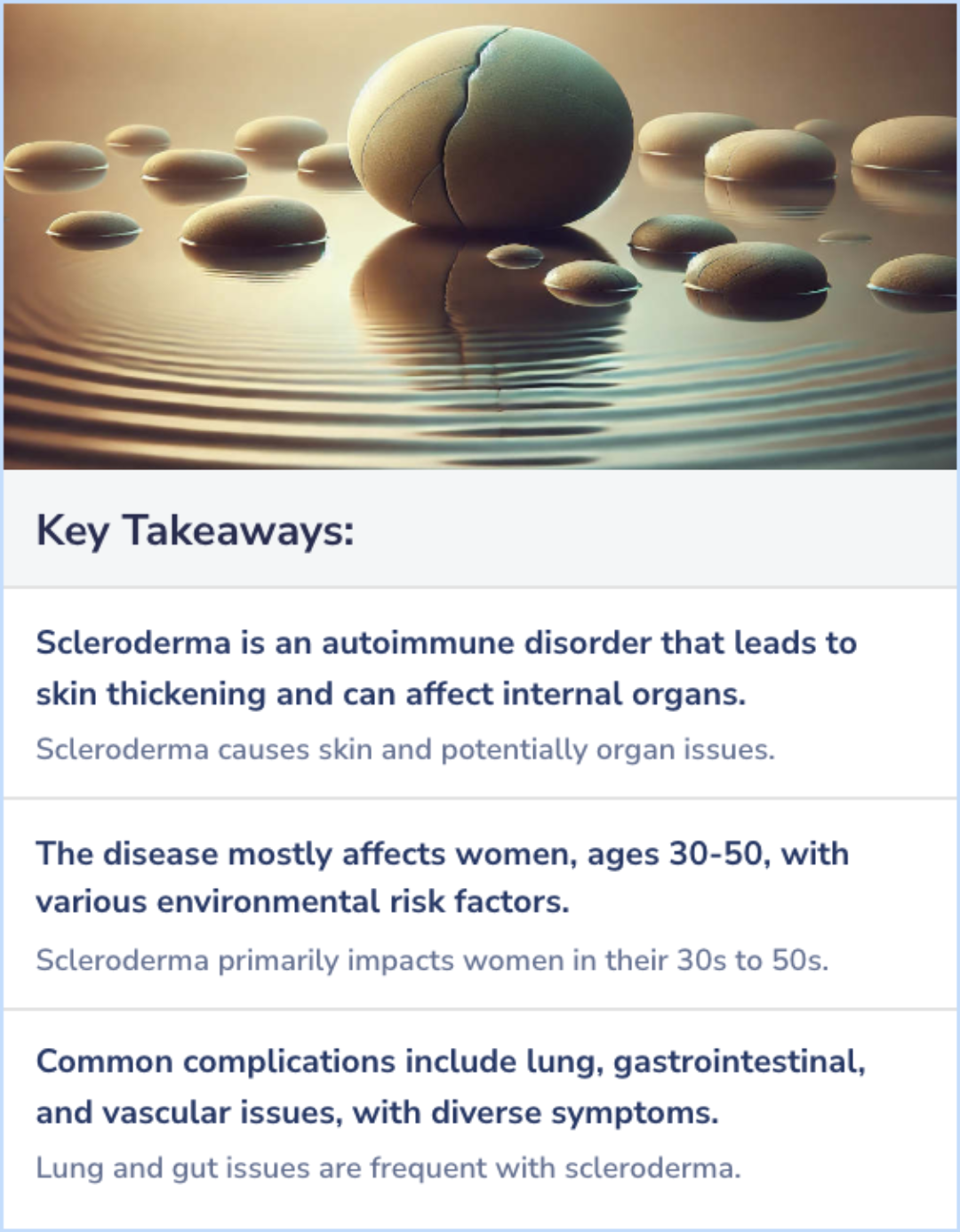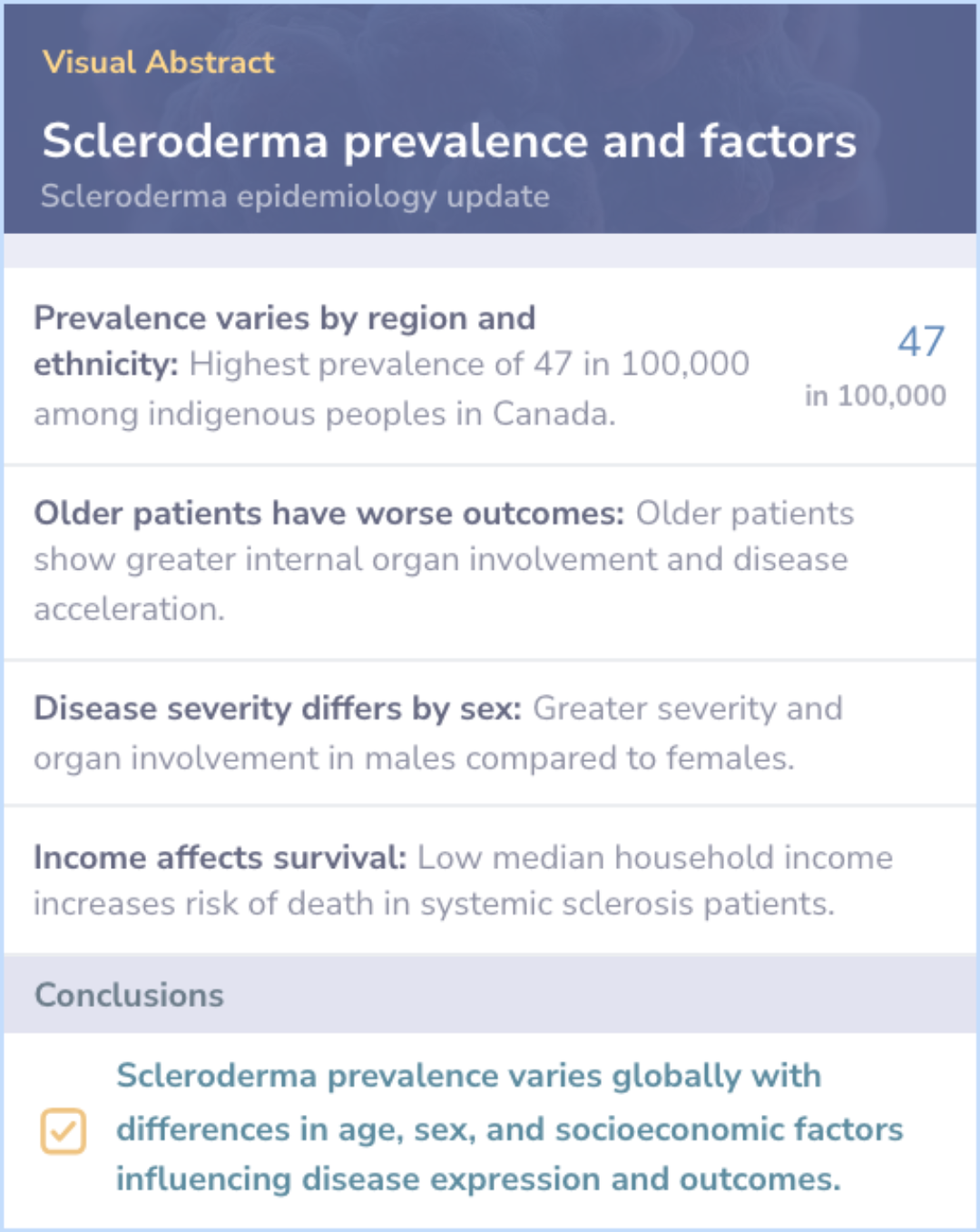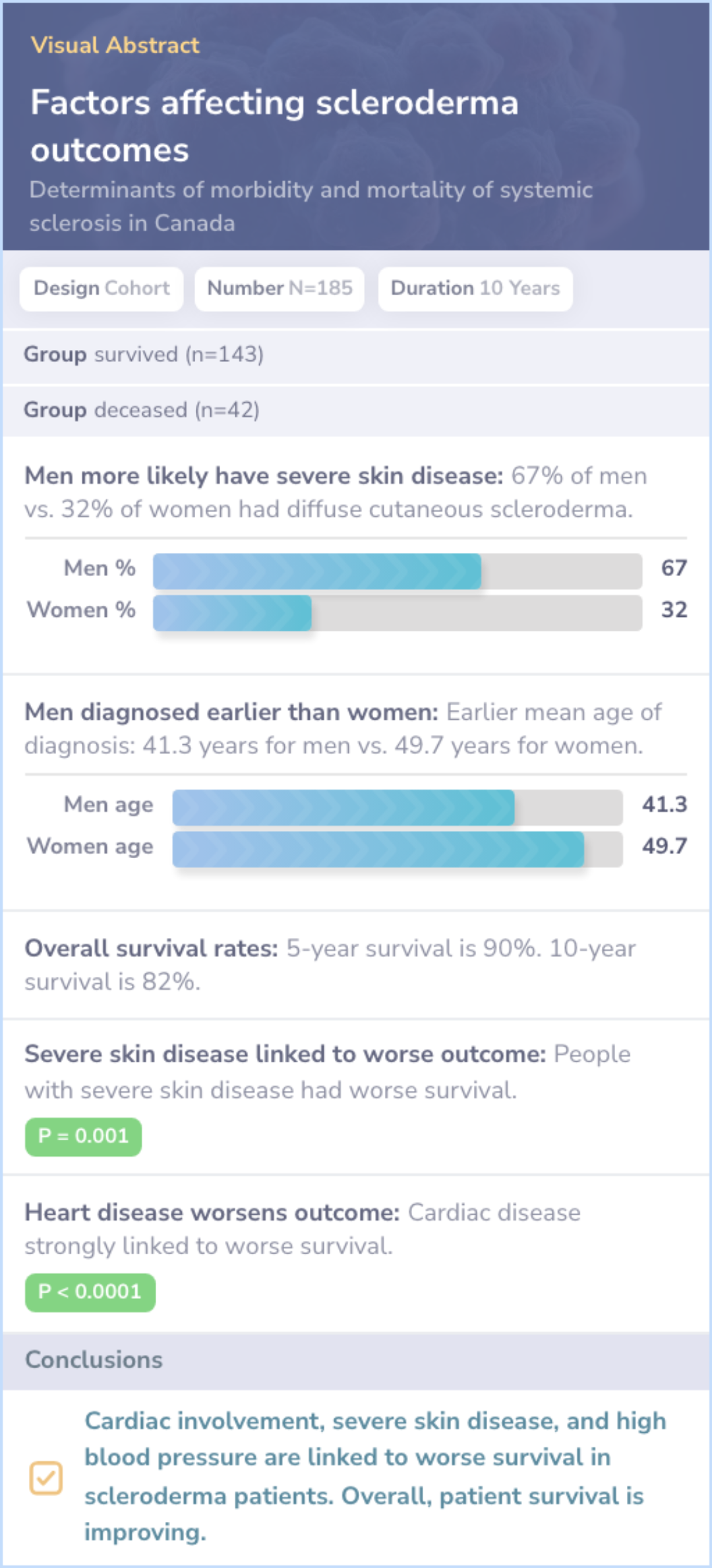Scleroderma
Evidence Based Answers
Scleroderma Overview
Scleroderma results in skin thickening and potential organ involvement, often affecting women in their middle years. The condition presents varied symptoms, including lung and digestive problems, with treatment focusing on symptom management.

Scleroderma often impacts women, thickening skin and affecting organs.
Unpacking Scleroderma: Key Concepts
Scleroderma comes from the Greek word 'scleros', which means thickening. In some people, the condition affects the entire body, known as systemic sclerosis (SSc). This type of scleroderma can involve the skin and internal organs.
The exact cause of scleroderma is unknown. It is an autoimmune disorder, which means the immune system mistakenly attacks healthy tissue. This causes a buildup of collagen, a protein responsible for skin thickening.
The exact cause of scleroderma is unknown. It is an autoimmune disorder, which means the immune system mistakenly attacks healthy tissue. This causes a buildup of collagen, a protein responsible for skin thickening.
“
Source Quotes:
The term ѕϲlеrоԁerma is used to describe the presence of thickened, hardened skin (from the Greek 'scleros').,Systemic sclerosis (ѕϲlеrоԁermа) encompasses a spectrum of related disorders, most of which share a characteristic clinical feature of skin thickening due to an excess of collagen fibers.
Who's at Risk for Scleroderma?
Scleroderma mostly affects women, with a female to male ratio between 3:1 and 8:1. It is typically seen in people aged 30 to 50 years, although it is relatively rare worldwide.
Certain environmental elements like silica dust can increase the risk of developing scleroderma. Additionally, specific autoantibodies in the bloodstream can suggest the risk of organ involvement in systemic sclerosis, aiding in understanding the disease's development.
Certain environmental elements like silica dust can increase the risk of developing scleroderma. Additionally, specific autoantibodies in the bloodstream can suggest the risk of organ involvement in systemic sclerosis, aiding in understanding the disease's development.
“
Source Quotes:
The majority of patients with SSc are female, with the female to male ratio ranging from 3:1 to 8:1.
Involvement of genetic factors in the pathogenesis of SSc has been studied first in twin studies, in analyzing human leucocyte antigen genes and more recently also in large multicenter genome-wide association studies.
Scleroderma's Impact on the Body
Changes in the skin are common in scleroderma, with varying degrees of firmness. Pulmonary (lung) complications are prevalent, affecting more than 80% of people with the condition.
The digestive system is often impacted, along with the kidneys and blood vessels, leading to symptoms like difficulty breathing due to lung tissue scarring and digestion issues due to changes in the gut wall.
The digestive system is often impacted, along with the kidneys and blood vessels, leading to symptoms like difficulty breathing due to lung tissue scarring and digestion issues due to changes in the gut wall.
“
Source Quotes:
Skin involvement is a nearly universal feature of SSϲ. It is characterized by variable extent and severity of skin thickening and hardening.
Nearly 90 percent of patients with systemic sclerosis (SSc) have some degree of gastrointestinal (GI) involvement, and approximately one-half are symptomatic.
Navigating Scleroderma Treatment
Treating scleroderma is challenging because the exact cause is not well understood, and current treatments manage symptoms rather than providing a cure. The condition involves both skin thickening and blood vessel changes.
Therapeutic strategies aim to reduce effects on skin, lungs, digestive system, and kidneys. Addressing scleroderma's varying impact on individuals poses significant difficulties for clinicians.
Therapeutic strategies aim to reduce effects on skin, lungs, digestive system, and kidneys. Addressing scleroderma's varying impact on individuals poses significant difficulties for clinicians.
“
Source Quotes:
As a result, treatment of these conditions is difficult, incomplete, and not curative.
Autoantibodies are found in 95% of patients with SSc. Specific autoantibodies are characteristic for different scleroderma subtypes and allow early diagnosis, prognosis and prediction of organ involvement.
Key Takeaways
Conclusions
Scleroderma, a systemic autoimmune disorder, is characterized by skin thickening and potential internal organ involvement. Predominantly affecting women between 30 to 50 years, its precise cause remains unknown, although it's linked to immune system dysfunction and environmental factors like silica.
Pulmonary, gastrointestinal, and vascular complications are common, while treatment efforts primarily focus on symptom management and addressing diverse organ impacts, underscoring the ailment's complexity in patient care.
Pulmonary, gastrointestinal, and vascular complications are common, while treatment efforts primarily focus on symptom management and addressing diverse organ impacts, underscoring the ailment's complexity in patient care.

Literature Review
Calderon, 2021
Epidemiological Insights:
Prevalence differences: Scleroderma is more prevalent in European and American regions.
Indigenous prevalence: Highest prevalence found in Canada's indigenous peoples.
Age and sex variations: Older patients see faster disease progression; males face greater severity.
Socioeconomic Impact:Low household income increases death risk in scleroderma patients.
Research Directions:Future studies may focus on personalized care and validation of new scleroderma criteria.

Literature Review
Al-Dhaher, 2010
Study Findings:
Survival Rate Trends: Mean survival in studies rose from 48 to 72 months.
Survival Outcomes: 10-year survival: 82% overall, 92% limited, 65% diffuse.
Mortality Factors: Cardiac, diffuse cutaneous type, hypertension worsen survival.
